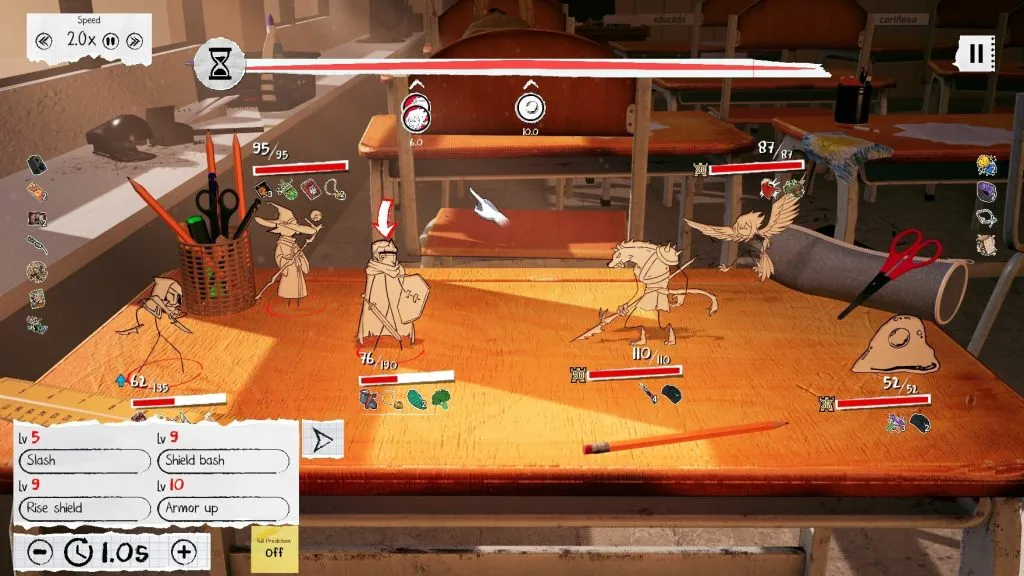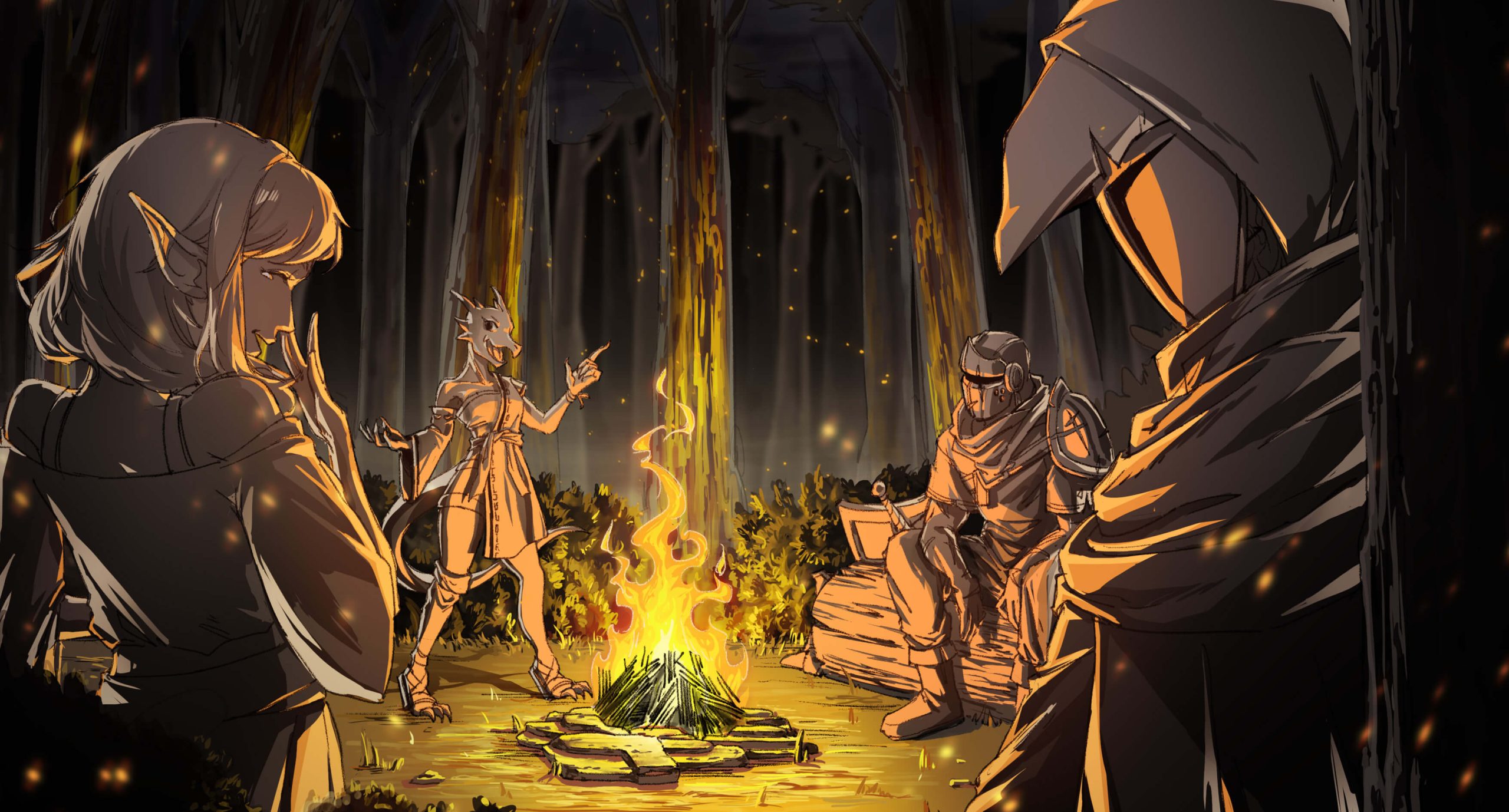A few days ago, I had the pleasure of trying out a fascinating roguelite RPG featuring an engaging and deep combat system. In this game, our pencil-drawn characters must strategically manage the timeline to succeed in battles. The title is Graphite, developed by the Colombian indie studio Estraiti and below are some details about it.

Let’s start by saying that Graphite is set across two interconnected realms: a fantasy world brimming with rich lore and a contemporary school environment where the game unfolds. Characters are whimsical pencil-drawn stick figures, while everyday objects serve as stand-ins for monsters and treasures, adding a playful touch to its design.
Players step into the role of a chosen hero selected by the mysterious “Scribe,” a deity overseeing the fantasy realm, to build strength and allies to confront “Death.” The game allows you to choose from various characters, each with unique story arcs that influence the narrative and gameplay. During the demo, I had the chance to try out the Knight, a character equipped with abilities that allow the use of a shield to take advantage of the Break system (which I’ll explain shortly) and to deal significant damage. Another character I tested was the Mage, who, in addition to offensive spells, can serve as a support unit by boosting the defenses of other characters.

After each battle, your character will level up, and with the points earned, you can choose which skills to upgrade and determine the direction of your build. The game’s roguelite mechanics mean enemies are randomly generated and scale in strength as the run progresses. Additionally, Graphite offers extensive customization, letting players adjust challenges, starting gear, and difficulty to suit their preferences. Then there’s everything you’d expect from a well-crafted roguelite: artifacts, events, and unlockables.
Where Graphite truly shines, however, is in its combat system. The game features a system based on a timeline mechanic. The first title that comes to mind with a similar combat system is Star Renegades. Essentially, every move has a duration, and you’ll need to decide whether to attack an enemy, defend yourself, or exploit the Break system. This system allows you to push an enemy’s turn further down the timeline by reducing their action gauge to zero. Of course, this mechanic can also be used against you, adding an extra layer of strategy to the gameplay.
There are no concrete details yet about the final release, which is expected to launch on PC via Steam and mobile. In the meantime, you can try the demo, which grants access to the first act of the game. Honestly, this title truly impressed me, and I’ll keep following its development. Below, you’ll find screenshots, an overview, and the trailer.


About Graphite
Graphite is split into two fronts, The imaginary side of the adventure, where the narrative background exists and the real world where the game is actually unfolding.
While the characters experience their narrative arcs in a classic fantasy world with rich illustrations and backgrounds, the gameplay side of things happens in a modern day, school environment. Characters are pencil-drawn stickmen, playing cards and an assortment of everyday objects are used as stand-ins for the monsters and treasures used in the fantasy.
In graphite we play as one of the chosen heroes by the “God of the Fantasy” -the enigmatic Scribe- to gather strength and more allies to defeat “Death”.
The player can choose between a group of different characters to be chosen as the hero. Each character has a narrative arc of their own and if chosen as the starting character certain events and progression events of the story change to fit that character’s themes and playstyle. The game is very replayable and it’s intended to play as all the characters to get the full picture of what’s going on both in and outside of the game’s narrative.
Gameplay-wise, Graphite is a Roguelike RPG. The player must optimize the random skills and items that each run provides to overcome the challenges ahead.
Here are some key features.
- Combat is turn based on a timeline in which multiple units act simultaneously, and the break system that can change the tide of battle quickly depending on the player party’s actions, meaning we have ample room for player skill and expression through multiple options, planning and timing.
- Everything stacks without limit. We can level up, learn skills and gather items as much as we want to. Do you want to be careful and distribute your resources in an even manner to be better suited to any situation? Great! Do you want a build with only 1 skill and the same item duplicated hundreds of times? Be my guest, we can accommodate both styles of play and everything in between.
- Enemies are generated randomly, get stronger over time and can eventually use items too, meaning that no combat is alike, and the further you are into a run the crazier enemies become.
- Almost everything can be customized for your runs, so challenges can be adjusted to a level the player feels comfortable with. You can even change your starting gear and level if you want to experience the late game right away.







